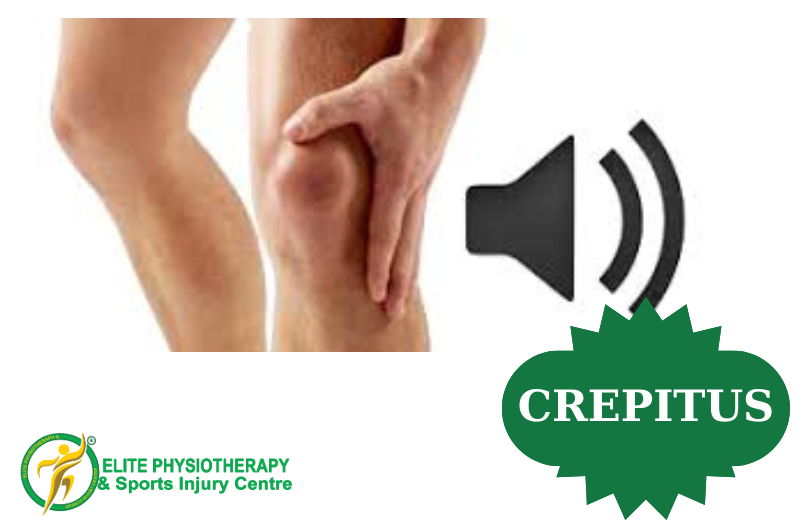
Crepitus – Cracking Joint
At Elite Physiotherapy and Sports Injury Centre, we recognise the significance of preserving joint health, particularly for athletes and active people. Our skilled staff is devoted to detecting and managing crepitus and its associated symptoms, ensuring that you return to optimum performance safely and effectively.
Questions
What is crepitus?
Crepitus is the cracking or popping sound you may experience or hear when moving specific joints, particularly the knees, shoulders, or neck. It can happen when cartilage breaks down, causing bones to rub together, or when gas bubbles develop in the joint fluid.
What are the common symptoms of crepitus?
The main symptom is a noticeable cracking, popping, or grinding sound in the joint when it moves. Alongside this, individuals may experience:
1. Joint stiffness, especially after prolonged periods of inactivity.
2. Pain when moving the joint ranges from mild to severe.
3. Swelling or inflammation in the afflicted region.
4. Sensation of something catching or grinding within the joint.Should crepitus always be a cause for concern?
Not always. Many people have crepitus without pain or other symptoms, which is typically harmless. However, if the sound is accompanied by pain, swelling, or restricted movement, it may indicate an underlying condition such as arthritis, cartilage loss, or joint degeneration. In such instances, seeking expert help is essential.
Why do athletes or active individuals frequently experience crepitus?
High-impact exercises and repeated movements frequently put athletes' joints under stress. Crepitus can develop over time due to wear and tear on cartilage, ligaments, and tendons, particularly in joints such as the knees and shoulders. Crepitus can occur as a result of frequent motion in activities like weightlifting, jogging, and basketball, when joints are subjected to high levels of stress.
How is crepitus diagnosed at Elite Physiotherapy and Sports Injury Centre?
At Elite Physiotherapy, we do a complete physical examination to assess the range of motion in the afflicted joint and listen for crepitus. Depending on the severity, diagnostic imaging such as X-rays, MRI, or ultrasound may be utilized to evaluate joint structure and rule out cartilage deterioration, arthritis, or other problems.
What are the treatment options available for crepitus?
Elite Physiotherapy provides tailored treatment that focuses on the underlying cause of the symptoms. Here are some common approaches:
1. Physiotherapy is the practice of strengthening the muscles around the joint in order to increase stability and minimize cartilage degeneration.
2. Manual therapy refers to specialized procedures for improving joint mobility and relieving pain.
3. Stretching and exercise programs are tailored to preserve flexibility and minimize stiffness.
4. Cold/hot therapy and ultrasound treatment can help to decrease inflammation and improve healing. In more severe situations, surgical intervention or referrals to orthopedic experts may be required.How can crepitus be prevented?
Preventing crepitus requires maintaining joint health by:
1. Strengthening activities that target muscles around the joints on a regular basis.
2. Warm-up and stretching exercises before engaging in physical activities.
3. Avoid stressing the joints with too much weight or repeated activities.
4. To reduce joint tension, adopt good footwear and maintain optimal posture when doing activities.When should someone with crepitus see a physiotherapist?
You should see a physiotherapist if:
1. Crepitus is associated with discomfort, edema, or stiffness.
2. The joint begins to feel unstable or weak.
3. There is a restricted range of motion or pain during regular tasks.
4. Crepitus worsens with time, even if there is no discomfort at first.
